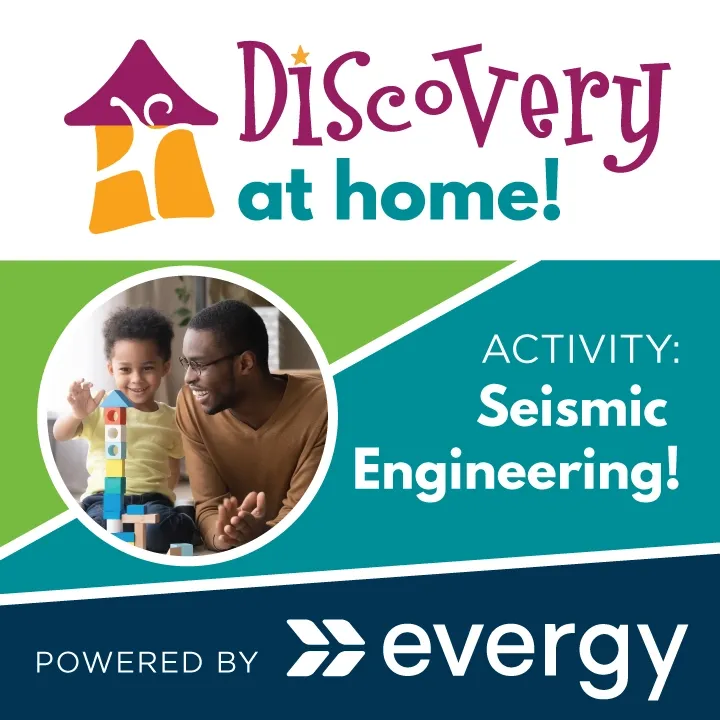Shake, rattle, and roll!
We love testing structures with our shake table here at the Discovery Center. Caitlin Luttjohann, Director of STEAM Education is using a cookie sheet to demonstrate how you can do seismic building challenges at home! A seismic wave is a wave of motion that travels through the ground, usually caused by forces like earthquakes, volcanoes or explosions. Engineers, especially those who work in areas prone to earthquakes, have to design structures with seismic waves in mind, so building something that can withstand a shake is a great real-world way to strengthen problem-solving skills. This activity is powered by our friends at Evergy.

What you need:
- Paper/recycled materials.
- Small weight (example: books, plastic cup of change, etc).
- Tape.
- Scissors.
- Baking pan.
Directions:
- Create a structure using paper and recycled materials on top of a baking pan.
- Place a weight on top of your structure.
- Slide the pan back and forth on the table to test the structure. This simulates an earthquake.
- If the structure falls, that’s okay! Fix it, reinforce it, and try again!
- If the structure remains standing – move the pan back and forth faster to see if it can withstand a more intense earthquake.
Ways to expand:
- Add another level to your structure. How tall of a structure can you construct that will withstand your tabletop earthquake?
- Use less materials than your current build to create a structure that is strong enough to hold the same amount of weight and withstand the tabletop earthquake.
What kids learn:
- Basic engineering skills. Engineers solve problems with constraints. They learn to solve problems by using the engineering design process: asking questions, coming up with solutions, building, testing and improving.
- Fine motor skills. Kids practice using the small muscles in their hands later used for writing.
- Experimentation! When kids experiment, they’re learning how to learn. Failure is an important part of experimenting, so let kids try things that won’t work. It’s how they figure things out!
Vocabulary:
- Seismic wave. A wave of motion that travels through the ground, usually caused by forces like earthquakes, volcanoes or explosions. Engineers, especially those who work in areas prone to earthquakes, have to design structures with seismic waves in mind.
- Constraint. A limitation or restriction. Materials, time, and space are common constraints. Real engineers have to work around constraints all the time!